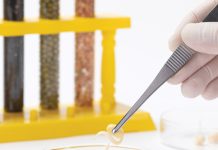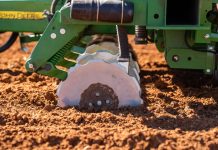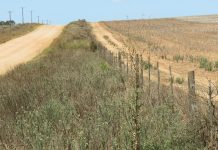
ARC-Grain Crops, Potchefstroom
 Dr Mahlane Godfrey Kgatle, Forestry and Agricultural Biotech-nology Institute (FABI), University of Pretoria
Dr Mahlane Godfrey Kgatle, Forestry and Agricultural Biotech-nology Institute (FABI), University of PretoriaAlternaria leaf blight (ALB) of sunflower is caused by Alternaria alternata, a seed-borne pathogen on sunflower, able to infect seedlings from a very young age.
However, the majority of infections take place during head formation. In severe infections, lesions caused by ALB become irregular by coalescing, leading to blight and premature defoliation and can furthermore decrease sunflower yield due to loss of photosynthetic leaf area. ALB occurs in all major sunflower production areas, namely Limpopo, Mpumalanga, North West and the Free State.
Recently Dr Godfrey Kgatle completed his PhD study on this disease, with the aim to improve the understanding of the causal organism, the epidemiology of ALB and to attempt to develop an integrated control system centralised around fungicide sprays.
Furthermore, A. alternata are known to produce mycotoxins and there are currently no regulations anywhere in the world for the presence of Alternaria toxins in food or feed. Research done by Flett et al., shows that Alternaria-infected harvested grain in South Africa is contaminated by two mycotoxins, namely tenuazonic acid and tentoxin, which were frequently found in both the shelled and unshelled sunflower seed samples. Tenuazonic acid has been found to have acute toxic effects on various mammals, although the dosage is unknown.
Epidemiology
Alternaria spp. overwinter on diseased stubble retained in the field and have been reported to be seed-borne. These infected sunflower seeds distribute the primary inoculum, which brings about the initial infections. The pathogen may contaminate the seed surface or the seeds may be infected systemically from the mother plant. The husk of the seeds are infected before the infection spreads to the embryo of the seed. During seed germination the pathogens are transmitted to the cotyledon or the seed coat. During systemic infections, the fungus grows into the ovule and later develops from the seed into the seedling.
The pathogen can also be carried either passively or actively to the host by air currents and rain splash. This dispersal of the conidia to young florets of healthy heads causes new infections. The epidemics of the Alternaria pathogen start when the sunflower plants start flowering, with the epidemic reaching its maximum intensity at plant senescence. The factors that contribute to epidemics of ALB include an increase in inoculum, favourable environmental conditions, elevated levels of spore deposition, predisposition to wounds and susceptibility of the cultivar. ALB is usually favoured by temperatures between 25°C to 30°C and twelve hours of leaf wetness. The disease is initiated when spores land on leaves or stems, germinate in the presence of moisture and directly penetrate and infect the leaves.
When the environmental conditions are favourable, the Alternaria conidia are able to germinate within three hours. The conidia are able to produce multiple germ tubes; these tubes penetrate the leaf cells. The pathogen overwinters or endures as spores or mycelium on decaying plant debris or as dormant infections in seeds.
Disease symptoms
Alternaria spp. cause disease lesions on leaves, petioles, stems, sepals and petals of sunflower plants. Leaf symptoms appear as circular, dark brown to black lesions with concentric rings ranging from 0,2 mm to 0,5 mm in diameter. Lesions will eventually enlarge in size and coalesce, causing blighting of leaves (Photo 1). Some lesions can be identified by distinct yellow halos, particularly on young plants. Stem lesions start as dark flecks that enlarge to form large elliptical to diamond-shaped sunken lesions (Photo 2). Dark brown oval to circular spots with a target-board appearance can form on heads. If the disease is severe, plants may be defoliated prematurely and die or frequently lodge.
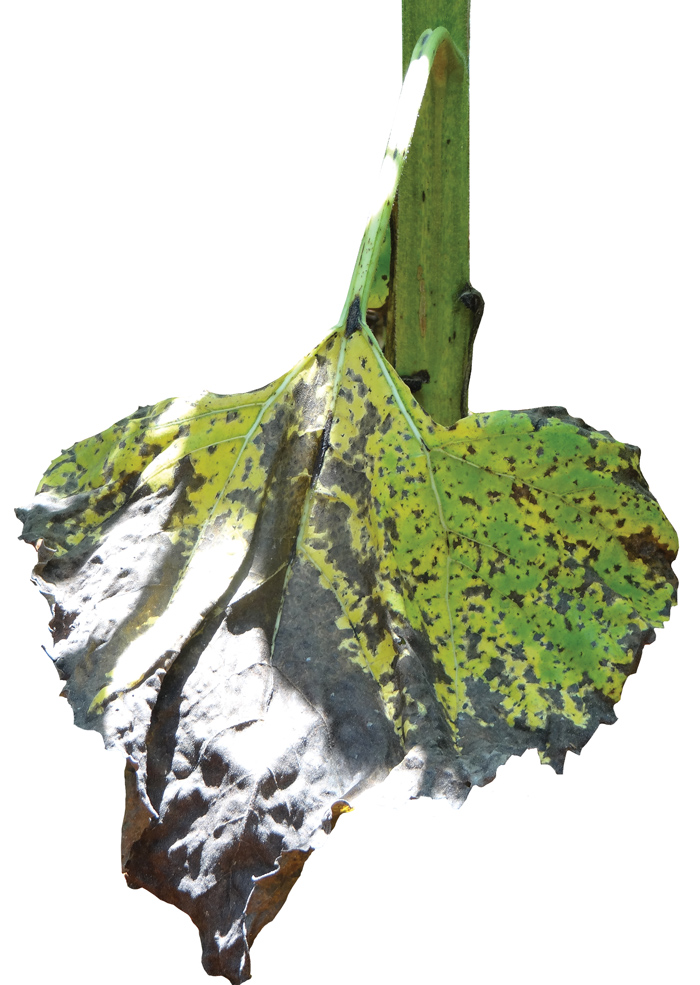
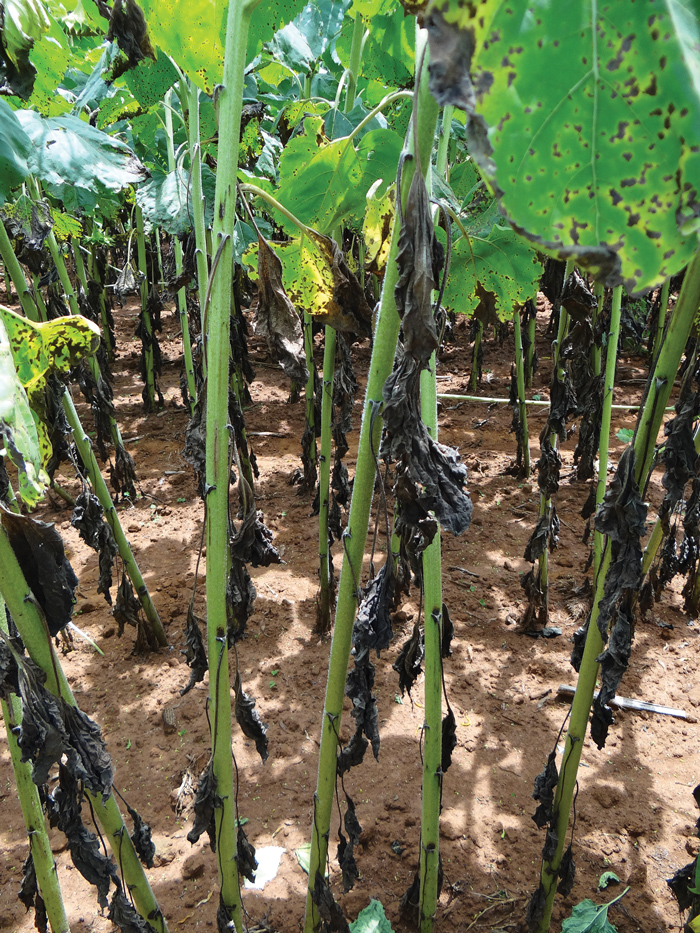
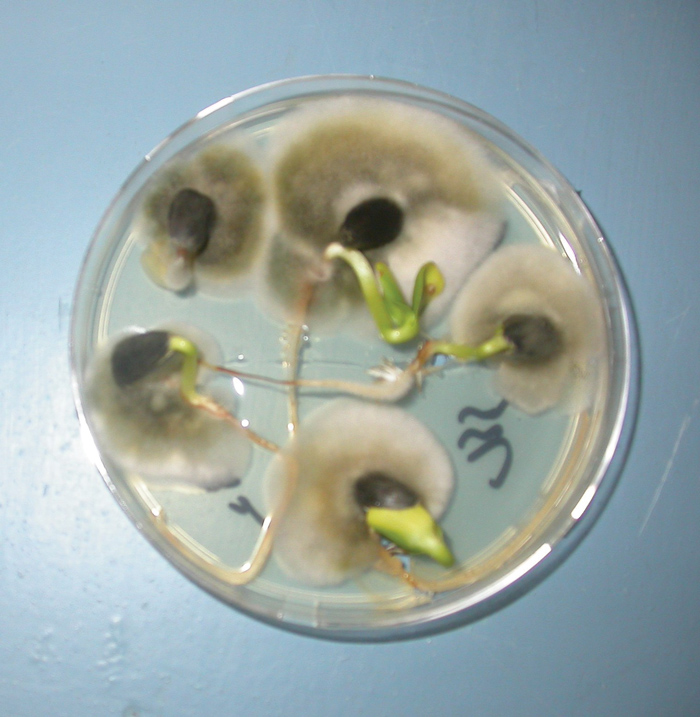
Disease control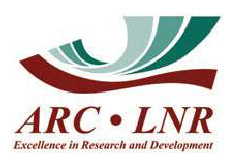
The disease can be controlled through cultural practices such as crop rotation, destruction and burial of plant debris and tillage operations that bury and rapidly promote residue decomposition. The disease can also be controlled by planting resistant or tolerant varieties and correct plant spacing. Chemical seed treatment with fungicides significantly reduces the incidence of Alternaria seedling blight. Unfortunately, no fungicides in South Africa have been registered to be used to control ALB.





